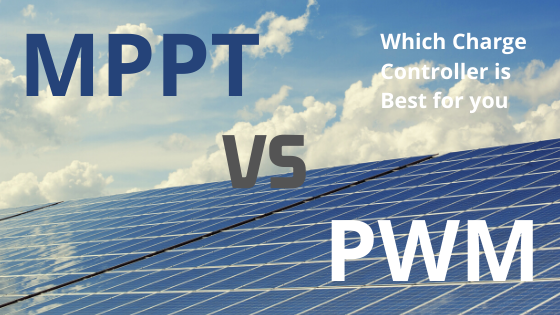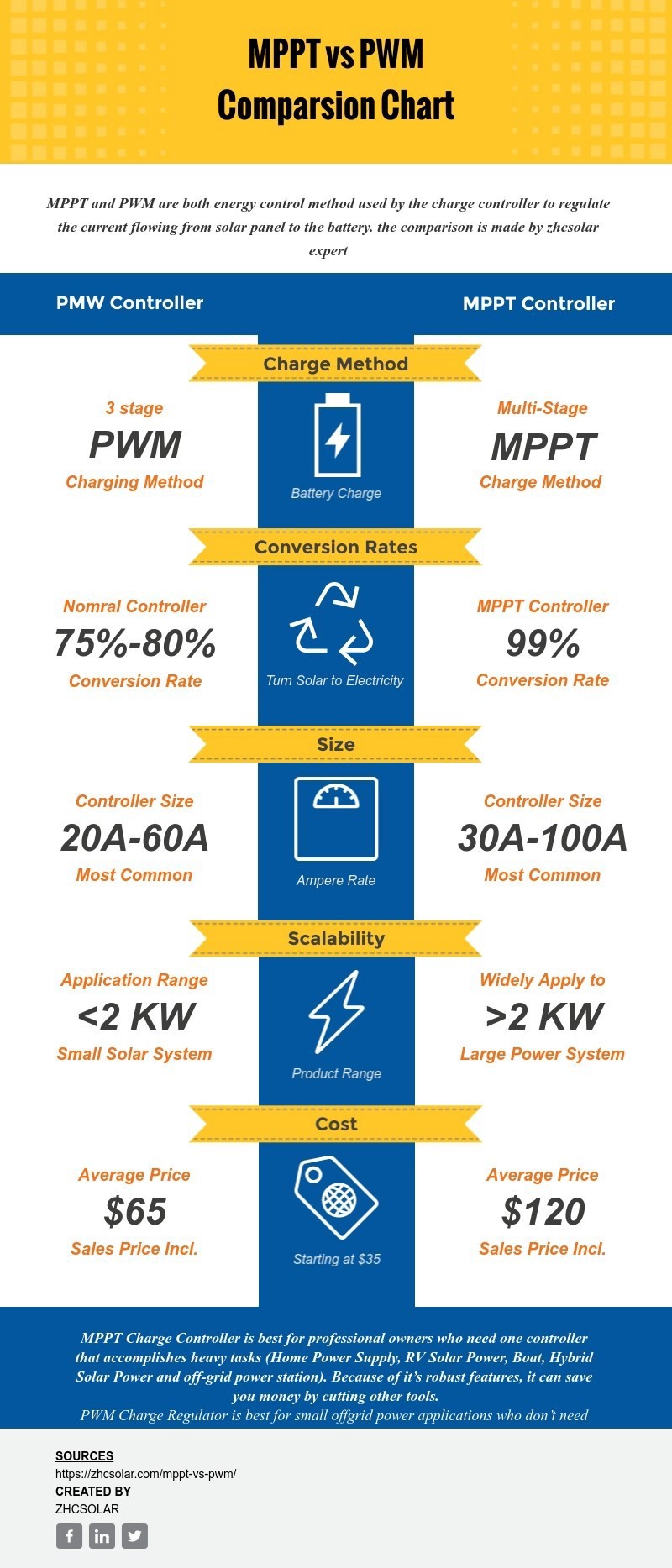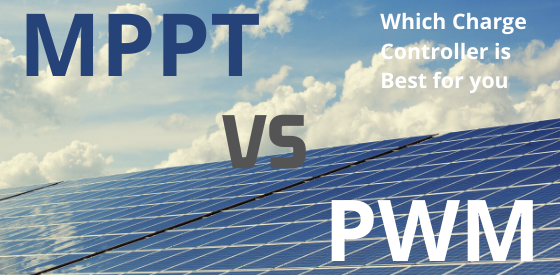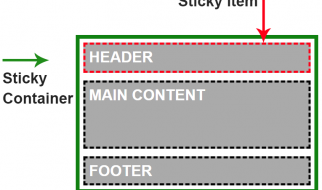 MPPT vs. PWM
MPPT vs. PWM
In this post, I?m going to put MPPT and PWM Charge Controller to the comparison.
So if you?re looking for a DEEP comparison of these two kinds of charge controllers, you?ve come to the right place.
Because in today?s post I?m going to compare MPPT vs. PWM in terms of:
- Working Principle
- Operation
- Performance
- Pricing and value
- Unique features
- Expert Recommendation
- And lots more
What a Solar Charge Controller do?
a Solar Charge Controller (aka Solar regulator) is a kind of controller regulate the charge and discharge process in the solar power system. the main role of the charge controller is to control the charge current flowing from the PV panels to the battery, keep the current flowing not too large to prevent the battery pack from overcharge.
there are 2 kinds of the solar regulator on the market:
- MPPT Solar Charge Controller
- PWM Solar Charge Controller
MPPT vs PWM Comparison Chart

MPPT vs PWM: Principle
MPPT and PWM are both energy control methods used by the charge controller to regulate the current flowing from the solar panel to the battery. PWM has a cheap price and a 75% conversion rate, mppt ask a higher price, but, the latest MPPT can get a huge conversion rate improvement which up to 99%.
What is MPPT
MPPT Stands for Maximum Power Point Tracking is a technique for tracking and regulate the output energy from the solar panel to the battery.
The MPPT detects the solar panel output voltage and current in real-time and continuously track the maximum power (P=U*I), regulates the output voltage correspondingly so that the system can always charge the battery with the maximum power.
What is PWM
PWM is short for Pulse Width Modulation, it?s a technique to modulating the width of pulse under certain rules, thus change the voltage and frequency of output energy from the solar panel to charge the battery. the PWM charge controller can be considered as an electric switch between the solar panel and battery packs.
MPPT vs PWM: Charge Difference
PWM charges the battery with constant 3 stage Charging (bulk, float and absorb), while the MPPT is Maximum power point tracking and can be thought of as multi Stage charging. The conversion efficiency of MPPT is relatively 30% higher compared to PWM.
PMW 3 Stage Charging:
- Bulk Charge: the bulk charge stage is when the PV system proceeds the most charge to the solar battery, When the battery voltage is low, the system will charge the battery with high current and voltage. It should be noted that there is a maintenance point (overcharge protection) and when the voltage at the battery end is higher than this maintenance value during charging, the direct charging should be stopped.
- Absorb Charge: After the first stage charging, the battery will normally wait for a period of time to allow the voltage to fall naturally, and then it enters the balanced charging stage. the stage also is called the constant voltage charging.
- Float Charge: Float charge is the last stage of 3 stage charging, as known as Trickle charging, A trickle is a small charge current to a battery at a low rate and in a constant manner. Most rechargeable batteries lose power after being fully charged due to self-discharge. If the charge continues at the same small current as of the self-discharge rate, the charge power can be maintained.
MPPT Multi-Stage Charging:
MPPT also has a 3 stage charging process, unlike PWM, MPPT has the ability to auto-switch the charge method base on the PV condition. here is how:
- Bulk Charge: at the bulk charge stage, the mppt controller working at Vmpp mode and automatically adjusts the output voltage to charge the battery, this ensures the system harvest the most power from the PV array. unlike PWM, at the bulk charge stage, the output is at a constant value. When the sunlight is strong, the output power of photovoltaic cells increases greatly, and the charging current can soon reach the threshold, abort the MPPT charging and switch to the constant-current charging method. When the sunlight becomes weak and hard to held constant current charge, then switch to the MPPT charging method, and so freely switch until the voltage at the battery side rises to the saturation voltage Ur, the battery enters the constant voltage charging stage. By combining the MPPT charging method with the constant current charging method and automatic switching, it is possible to make full use of solar energy to charge the battery quickly.
- Balance Charge / Boost Charge: As the battery is charged to the boost voltage setpoint, the solar controller continuously adjusts the charging current to keep the battery charging process.
- Absorb Charge: at the absorb charge stage, as the battery voltage increased, the charging current gradually decreases, when the charging current falls to about 0.01C, the constant voltage charging ended.
- Float Charge: The charge voltage (Uf) in the floating charge mode is a little lower than the constant charge. The main purpose of this charging stage is to compensate for the self-losing energy of the battery. at the process, the battery gets fully charged.
MPPT Charging Advantages:
- Quickly scan the whole I-V curve and track the PV cell PowerPoint in seconds.
- Innovative maximum power point tracking technology can significantly improve the solar system energy utilization rate, conversion efficiency up to 97%.
- Increase charging efficiency by at least 20% compared to PWM
- With the same load, using the MPPT charging method can reduce the power of PV modules and reduce module costs.
the MPPT Charge Curve is shown below:
MPPT vs PWM Solar Charge Controller: Application
PWM Solar Charge Controller is the most common, cost-efficient, and easy deployed charge controller solution for small off-grid power systems. MPPT Regulators have much more electronics components inside and are much more complex than PWM type charge controllers.
PWM solar controller usually applied in a small 12V or 24V PV system. MPPT type regulator also can work with 12v, 24v system but some models also can handle 36v and 48v system when needed. size the right ampere for the controller is easy with this tool.
MPPT Charge controller asks for higher prices than the PWM type but has wider applications and in a larger solar project, the mppt controller is the only option to work with.
MPPT vs. PWM: Pros and Cons
MPPT and PWM Charge Controllers perform the same tasks in the solar power system. we create a list that includes all the advantages and disadvantages of both technologies for your reference.
MPPT Charge Controller Pros
- Maximum Power Point Tracking Algorism Increase Power Conversion rate up to 99%
- 4 Stage Charging is healthier to battery
- Scalable for Large off-grid Power system
- Available for solar systems up to 100 Amps
- Available for solar input up to 200V
- Offer flexibility when system growth required
- Equipped with multiple protection
- Rich modes for load configuration
- Some can Charge Lithium (Lifepo4) Battery
MPPT Charge Controller Cons
- High Prices (usually cost twice of a PWM Charge Controller)
- Larger Size than a PWM regulator
PWM Solar Controller Pros:
- PWM Regulator has mature and proved techniques
- PWM Regulator is Simple Structure and cost-effective
- Easy deployed
- Less budget for a small project
PWM Solar Charge Controller Cons:
- Low conversion rate
- Input voltage must match battery bank voltage
- Less scalability for system growth
- Less Load Mode
- Less Protection
MPPT vs PWM Charge Controllers: MPPT Advantages
To charge the battery, the output voltage of the solar panel must be higher than the input voltage of the battery. If the solar panel output voltage is lower than the input voltage, then the charge current will be close to 0 (zero).
Moreover, the output of the solar panel is not a fixed value, the curve changes a lot during the working time, many factors like sunlight intensity, ambient temperature, even the dampness can affect the solar conversion.
When using with a PWM Controller, as the PWM system lacks flexibility, the setting parameters cannot be changed, that means during the charging process, the output voltage and current remain constant. even the solar input changed, nothing changed to the controller output.
as environmental factors like sunlights level, surrounding temperature, and humidity are constantly changing. the energy generated from the solar panels may have wasted even the sun is good.
A PWM controller works like a switch and connects the solar array directly to the battery when charging. This requires the solar array operates in a voltage range that is typically below Vmp.
in a 12V solar system, the battery voltage range is typically 11?15V, but the Vmp voltage of the solar array is typically around 16 or 17V.
Since PWM Controllers don?t always operate at PV arrays Vmp, this will cause energy loss, The greater the difference between the battery voltage and the Vmp of the panel array, the more energy wasted.
The invention of the MPPT controller solves this problem, by the favor of MPPT algorism, The controller automatically tracks the high power points of the PV to ensure maximum energy is obtained from the solar array.
in a solar power system, the cost of solar panels and batteries accounts for 80%-90% of the total budget. and the controller only takes the rest 5%-10%. but If you choose the right charge regulator type, a 5% budget solar controller can optimize the system to its best performance. take an mppt type is highly recommend when you looking for RV solar solutions. check the guide here.
Here is an example for you to better understand the mppt advantages, let?s say you have a 1000W panel system, if you replace the PWM controller with an MPPT type, you only need to install 700W solar panels to get the same power.
the solar panels price is about $2/W on the market, then the whole cost of solar panels can be reduced to $650. In such cases, in larger systems, the savings can be greater, including the cost of purchasing the panels, cables, and more.
Besides, there are many amorphous silicon solar panels in the market. One feature of this panel type is that the open-circuit voltage is high and the current is small. this kind of panel works better with an MPPT Controller.
MPPT vs. PWM: Circuit Board Differences
Conclusion: Which Charge Controller Is Best For You?
There you have it-an MPPT vs PWM showdown on a feature-by-feature basis. the mppt type is the winner in my eyes, but the PWM type still has spaces.
Based on everything you?ve seen, here?s my conclusion:
- MPPT Charge Controller is best for professional owners who need one controller that accomplishes heavy tasks (Home Power Supply, RV Solar Power, Boat, Hybrid Solar Power, and off-grid power station). Because of its robust features, it can save you money by cutting other expenses.
- PWM Charge Regulator is best for small off-grid power applications that don?t need any other features and has no much budget. If you just want the basic and economical charge controller for a small lighting system that doesn?t try to fit the needs of others, the PWM controller is the way to go.
What do you think? Are you going with PWM or MPPT? Did I miss any major features? Let me know in the comments!
Helpful Resources:
? Best 40 Amp MPPT Charge Controller Worth to Buy
? Best 60 Amp MPPT Charge Controller Review
? Best 30 Amp MPPT Charge Controller of 2020
? Best RV Solar Charge Controller of 2020
? Best 48V Solar Charge Controller Review
? Best Lithium Solar Charge Controller 2020 Review
Originally published at https://zhcsolar.com on April 22, 2020.


